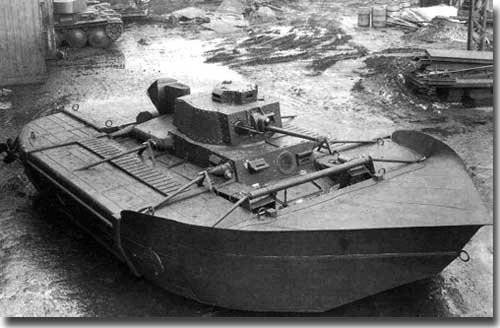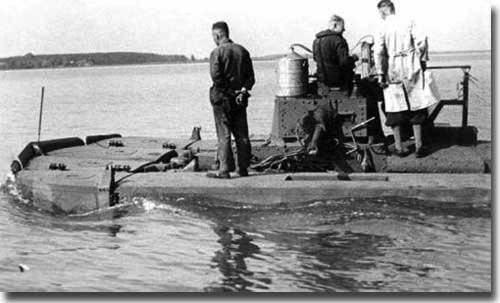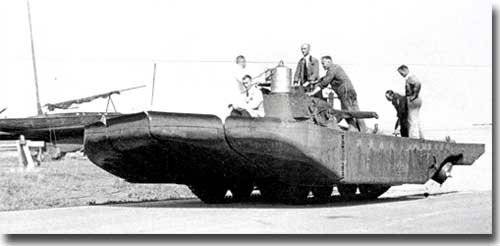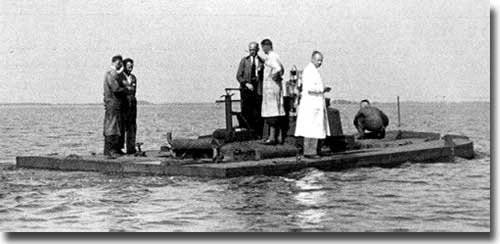Czech engineers in the service of the Wehrmacht, amphibious tanks

(Prototype amphibious variant Pz.Kpfw.38 (t))
The creation of armored vehicles capable of moving not only on land and on water, at all times excited the minds of many engineers and designers - tank builders. German engineers of the pre-war period were no exception. In preparation for the war, this area becomes more relevant than ever, especially against the backdrop of the Wehrmacht’s landing on the British Isles, according to the developed operation “Seelöwe” (“Sea Lion”). In 1940, German designers were among the first to equip more than 100 medium tanks PzKpfw III Ausf. With underwater equipment, this type of machine is called the Tauchpanzer. In addition to equipping serial OPVT tanks (equipment for underwater driving), German engineers developed their own projects for amphibious tanks and armored vehicles. In the same 1940, more than 50 amphibious tanks, the Schwimmpanzerwagen II, were built on the basis of the Pz-II, although it would be more correct to say that German designers designed special floats that were attached to the sides of the machine and thus did not allow it to sink. The movement through the water was carried out by rotating the tank’s tracks, the maximum speed through the water was about 10 km per hour. But after testing, it turned out that the driving performance of the Schwimmpanzerwagen II is unsatisfactory and soon they were converted to conventional tanks. However, after the occupation of Czechoslovakia, having gained control of its industry and placing the military potential of Czechoslovakia at the service of the Third Reich, German tank builders turned their eyes to Czech-made tanks.

After the annexation of the Sudetenland region in October 1938 of the year, and then the annexation of the remaining areas of Czechoslovakia (Bohemia and Moravia) to Germany, the latter, as trophies, received an 244 tank LTvz.35, produced at the Skoda plant in Czechoslovakia. In the Wehrmacht, they received the designation Panzerkampfwagen 35 (t) or Pz.Kpfw.35 (t). For its time, these were not bad tanks, but by the beginning of 1940, they no longer met the basic technical requirements for Wehrmacht tanks, but were still in service. In particular, in the 6 Tank Division, as of June 1941, there were 160 units of Pz.Kpfw.35 (t), during this period the Wehrmacht had more than 180 tanks LT vz.35 and 760 LT vz.38 during this period. Under occupation, Czech tank builders continued to manufacture vehicles for the German army, one of these tanks was LT vz.38, which received the designation Panzerkampfwagen 38 (t) in the Wehrmacht, t designates the country of origin, in this case Czechoslovakia. LT vz.38 was better armed and had thicker armor in comparison with LT vz.35, and during the French company showed its good fighting qualities, but it was not without flaws. Of course, the German generals understood that the combat qualities of LT vz.38 were already insufficient, but they were still good enough to create amphibious tanks on their base.
At the end of the 30s, German tank builders, together with Czech engineers, began work on a new design for a amphibious tank, later designated Schwimmpanzerwagen 38 (t). Changes to the design and sealing of the armored hull of the Panzerkampfwagen 38 (t) tank were carried out in the city of Roslau, by Geur. Sachsenberg, in the same ball designed the design of the air intake pipe, through which air was supplied to the engine of the tank. The design of the pontoon floats was developed by the Czech company VMM and the German Kessborer.

As a result, by February 1941, the first prototype of the pontoon floats, designated AP-1, was manufactured. The design of the pontoon was a metal, solid, flat-shaped float, the nose of which had a streamlined shape as on river or sea vessels, with a notch equal to the dimensions of the serial tank LT vz.35. For movement on the water tank was placed in this cut-out, the rear drive wheels through a special mechanism set in motion two propellers placed on the sides of the pontoon in the rear part. The rotation of the machine during the movement on water was carried out by braking one of the tracks. Which in turn led to the stop of one of the screws. It is also worth noting the thought-out mechanism for dumping floats, pontoons, which made it possible very quickly, within a few seconds, to get rid of them when the car reached the shore.

Immediately after the manufacture of the first prototype of the AR-1 pontoon, equipped with the Panzerkampfwagen 38 (t), it was sent to a test site in Kummersdorf. During the tests, the new Schwimmpanzerwagen 38 (t) showed a fairly good speed for amphibious tanks of that time - more than 12 km per hour. However, by that time, the Wehrmacht’s command was already interested in completely different machines, since the Barbarossa plan had already been developed, and in the near future Heinz Guderian’s tank wedges would break the defenses not on the British Isles, but on the eastern front. Since the Wehrmacht already had tanks equipped with equipment for underwater driving, this, according to German generals, was quite enough to overcome the water obstacles in Russia. However, despite this, Czech specialists continued testing the machine. In 1942, they carried out further tests of the amphibious tank, which were carried out on the Vlatva River, but the events on the eastern front, the defeat at Stalingrad, finally convinced the German leadership that the Wehrmacht would hardly need amphibious tanks in the near future. Moreover, the low road performance and low maneuverability of the vehicle while driving on water made the Schwimmpanzerwagen 38 (t) vulnerable to enemy coastal artillery. The LT vz.38 tank by the year 1942 was hopelessly outdated and did not have the potential for modernization, its weak armor and armament was not capable of solving combat missions to seize the enemy coastline and destroy enemy fortifications placed on it. Therefore, soon all work on the project Schwimmpanzerwagen 38 (t) were discontinued.
Information